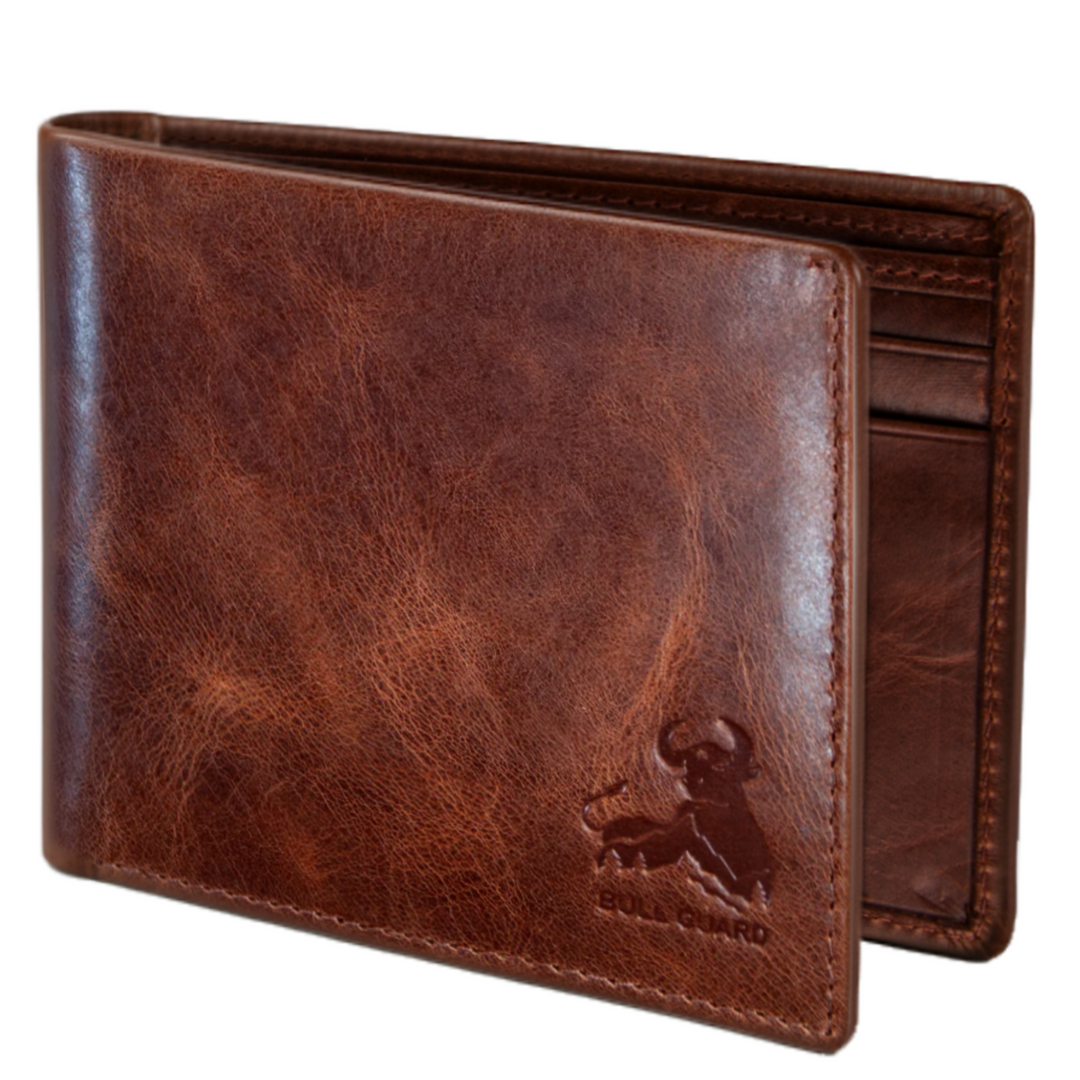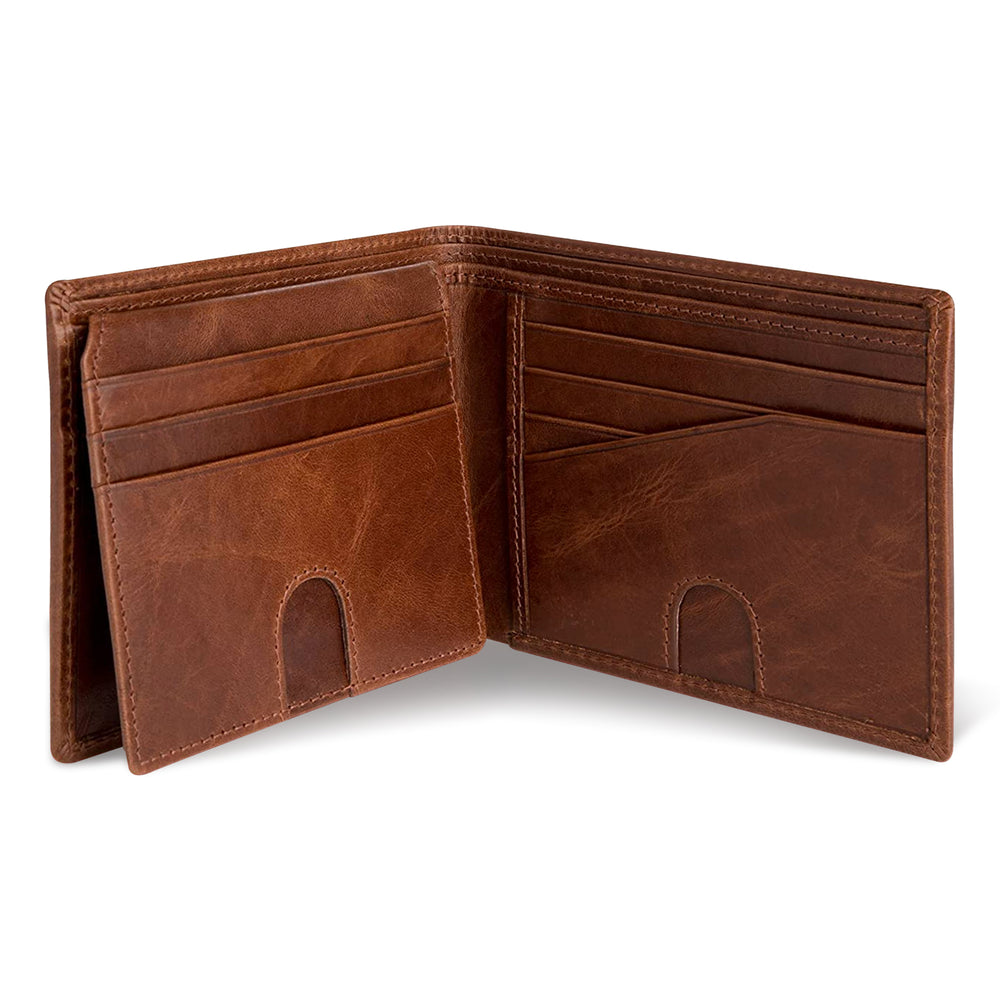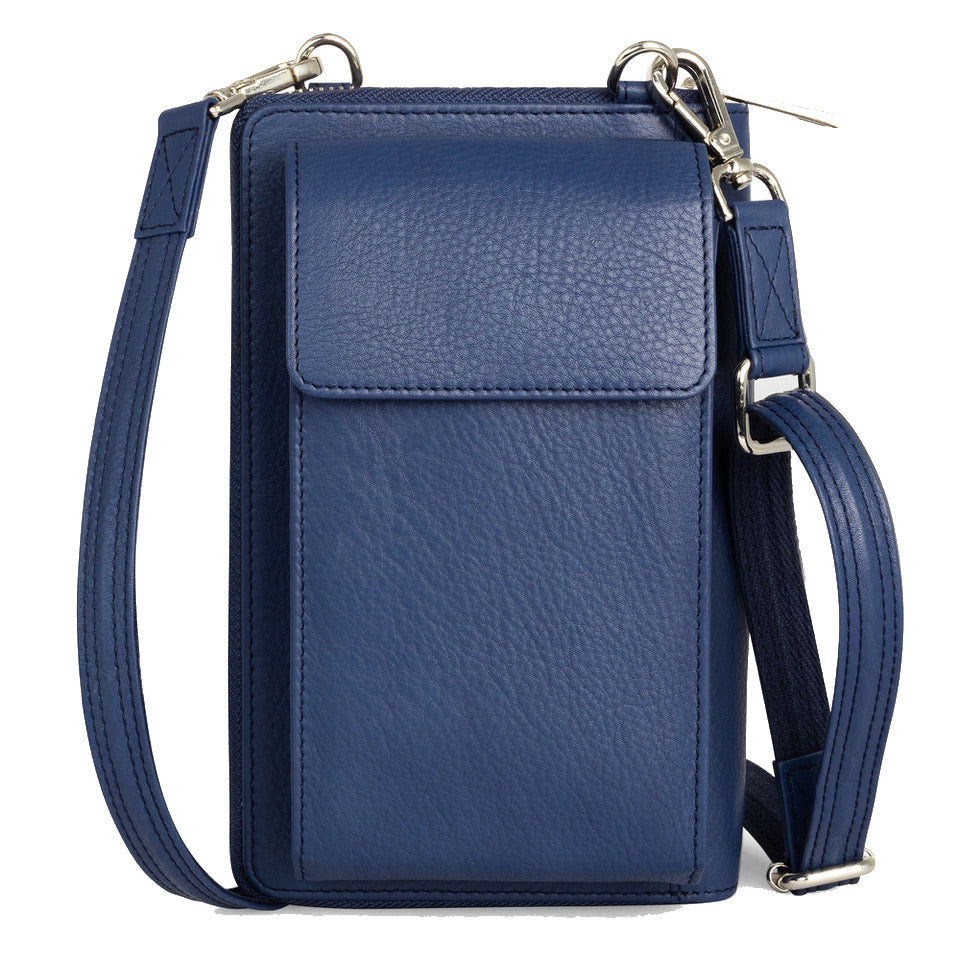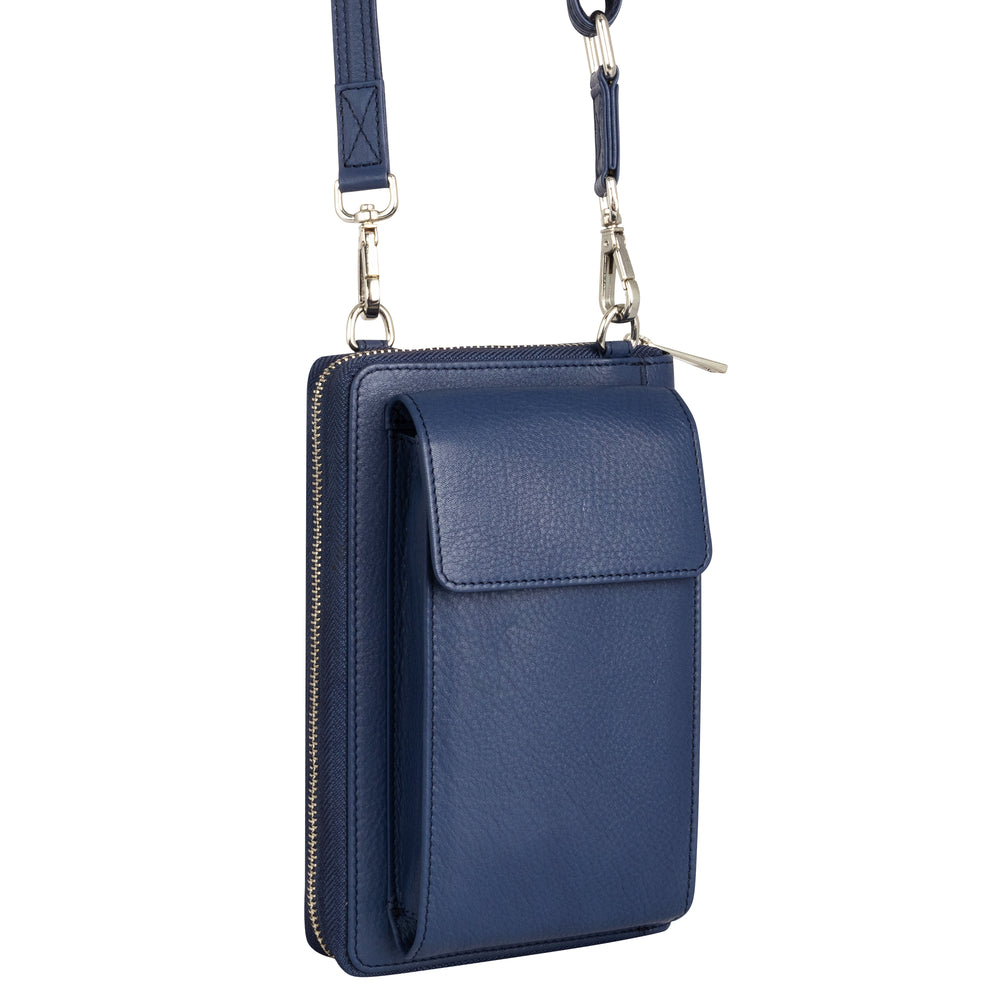Key Takeaways
- The oldest wallet discovered belonged to Ötzi the Iceman and dates back to 3,300 BC.
- Ötzi's wallet was a simple leather pouch used to carry essential survival items.
- This ancient wallet symbolized freedom, preparedness, and bravery in exploring unknown terrains.
- The history of wallets spans over 5,000 years, inspiring modern designs.
Table of Contents
- What Defines a Wallet Through Time
- Etymology and Earliest Wallet Forms
- Ancient Beginnings: Ötzi and the First Wallets
- Wallets Across Ancient Civilizations
- Medieval Evolution to Paper Money
- Modern Wallet Innovation and Security
- Cultural Significance Through the Ages
- The Bull Guard Perspective: Past in Every Present Piece
- Ancient vs. Modern Wallets: A Living Evolution
- Best Modern Wallets Inspired by Ancient Wisdom
- Why Leather Endures Across Centuries
- Security Evolution: From Hidden Pouches to RFID Protection
- Ancient vs. Modern Wallets: A Journey Through Time
- Cultural Significance: The Wallet as Social Mirror
- Materials Evolution: From Survival to Sophistication
- Security Evolution: From Hidden Pockets to RFID Protection
- Modern Wallet Categories: Ancient Principles in Contemporary Forms
Oldest Wallet: From Ancient Pouches to Bold Companions
I've spent countless hours sketching wallet designs in my workshop, but the story that truly inspires me began over 5,000 years ago. The oldest wallet ever discovered belonged to Ötzi the Iceman, dating back to 3,300 BC—a simple leather pouch that carried his survival essentials across alpine terrain. This ancient companion wasn't just storage; it was freedom, preparedness, and the courage to venture into the unknown.
Every Bull Guard wallet I design carries this same spirit. From our RFID-blocking bifolds to crossbody purses, each piece honors the timeless truth that your wallet isn't just an accessory—it's a trusted companion that evolves with your adventures, develops character through use, and empowers you to carry life boldly.
What Defines a Wallet Through Time
A wallet transcends its basic function of holding cards and cash. Throughout history, it has served as humanity's portable command center—organizing essentials, protecting valuables, and expressing identity. The core traits remain unchanged: utility, security, craftsmanship, and personal expression.
These same principles drive every Bull Guard creation. Whether it's the thumb-cut slots in our bifolds or the slash-proof straps on our crossbody purses, we honor the ancient understanding that your carry companion must adapt to your life while maintaining unwavering reliability.
Etymology and Earliest Wallet Forms

The word "wallet" derives from the Old North French "walet," meaning bag or knapsack. Early forms included animal skin pouches, woven cloth sacks, and tied bundles—all designed for mobility and protection. These weren't flat, compartmentalized accessories but rather functional vessels for survival tools, coins, and precious items.
The critical evolution came with paper money's introduction in the late 1600s. Suddenly, carriers needed flat, organized storage rather than bulky pouches. This shift created the foundation for modern wallet design—the same organizational thinking that guides our trifold layouts and card-specific slots today.
Ancient Beginnings: Ötzi and the First Wallets
Ötzi the Iceman's leather pouch represents the oldest known wallet, discovered in the Alps and dating to approximately 3,300 BC. His simple but ingenious carry system held flint, tinder, and essential tools—everything needed for survival and adventure in harsh mountain terrain.
Ancient Greeks and Romans developed more sophisticated coin purses, often leather or textile pouches worn at the hip or concealed within garments. These early wallets prioritized the same elements we value today: accessibility, security, and durability. The materials—primarily leather and animal hide—were chosen for their strength, flexibility, and weather resistance.
Wallets Across Ancient Civilizations
Ancient Egyptians, Greeks, and Romans each developed distinct approaches to personal carry. Hip pouches, money belts, and secret satchels sewn into togas reflected both practical needs and social status. Early security features included hidden openings and concealed pockets—innovations that echo in our modern RFID-blocking technology.
Asian traditions favored silk pouches and ornate coin purses, particularly in China and Persia. These emphasized craftsmanship and beauty alongside function, establishing the wallet as both utility and art—a philosophy central to Bull Guard's approach to leather selection and finishing.
Medieval Evolution to Paper Money

Medieval wallets became more personal and refined, holding coins, seals, love tokens, and calling cards. Often displayed openly on belts, they served as status symbols and conversation pieces. The introduction of paper money in late 17th century Massachusetts created the critical shift toward flat, compartmentalized designs.
This period established the wallet's dual role: practical organizer and personal expression. Materials evolved toward refined leathers—cow, lamb, and horse hide—chosen for their ability to age gracefully and develop character through use, much like our full-grain and top-grain leather selections today.
Modern Wallet Innovation and Security
Contemporary wallets balance tradition with technology. RFID-blocking capabilities address digital-age security threats, while features like AirTag holders and removable inserts serve modern mobility needs. Materials range from heritage full-grain leather to exotic options, each chosen for specific lifestyle demands.
Bull Guard wallets exemplify this evolution—combining time-tested leather craftsmanship with cutting-edge RFID protection. Our bifolds with flip-up ID serve traditional preferences, while slim minimalist designs meet modern carry demands. Each style maintains the essential wallet mission: organized, secure, and ready for any adventure.
Ancient vs. Modern Wallet Comparison
| Feature | Ancient Wallets | Modern Bull Guard Wallets |
|---|---|---|
| Form | Pouches, hip-satchels, belt purses | Bifold/trifold, card cases, crossbody purses |
| Material | Raw leather, animal hide, cloth | Full-grain/top-grain leather, refined finishing |
| Security | Hidden pockets, cord ties | RFID-blocking, YKK zippers, slash-proof straps |
| Purpose | Survival tools, coins, tokens | Cards, cash, ID, phone, tech accessories |
| Aging | Weather-worn patina | Intentional patina development, character building |
Cultural Significance Through the Ages
Wallets have always served as social mirrors, with size, style, and visibility signaling wealth, humility, or aspiration. From medieval coin purses displayed prominently to modern minimalist designs tucked discretely away, wallets reflect cultural values and personal priorities.
This symbolic power continues today. A Bull Guard wallet doesn't just organize your essentials—it communicates your commitment to quality, your respect for craftsmanship, and your readiness for whatever life brings. The developing patina tells your story, while the enduring construction promises many chapters ahead.
The Bull Guard Perspective: Past in Every Present Piece

Every Bull Guard wallet carries the DNA of history's greatest carry companions. Our RFID-blocking bifold wallets honor the same principles that made Otzi's leather pouch survive 5,300 years—purposeful design, premium materials, and unwavering functionality. When I sketch each Bull Guard piece, I'm channeling that ancient wisdom: every compartment serves a purpose, every stitch tells a story of endurance.
Our customers become modern-day guardians of this timeless tradition. Rick, a 48-year-old graphic designer, describes his Bull Guard wallet as carrying "the spirit of the bull—rugged sophistication that withstands both urban jungle and wilderness." Like the oldest wallet discovered with Otzi, Rick's wallet develops character through daily adventure, its leather softening and gaining the patina that only authentic full-grain leather can achieve.
Ancient vs. Modern Wallets: A Living Evolution
The journey from Otzi's simple leather pouch to today's RFID-blocking bifolds reveals humanity's constant drive to improve without abandoning what works. Ancient wallets prioritized survival essentials—flint, tinder, tools for the unexpected. Modern Bull Guard wallets serve the same protective instinct, just adapted for today's adventures: credit cards, identification, cash, and technology integration.
| Feature | Ancient Wallets (3300 BC - 1600 AD) | Bull Guard Modern Wallets |
|---|---|---|
| Primary Material | Raw animal hide, basic leather | Full-grain & top-grain leather |
| Security Method | Hidden placement, cord ties | RFID-blocking, secure compartments |
| Capacity Design | Single pouch, everything mixed | Organized slots, dedicated spaces |
| Durability Focus | Survive harsh elements | Daily use, urban & outdoor adventures |
| Personal Expression | Tribal markings, simple decoration | Color variety, logo options, patina development |
| Technology Integration | Stone age tools | AirTag compatibility, RFID protection |
The most striking parallel lies in material choice. Ancient craftsmen selected leather because it offered flexibility, strength, and weather resistance. Bull Guard maintains this wisdom, using only the highest grades of leather that improve with age, just as those ancient pouches did.
Best Modern Wallets Inspired by Ancient Wisdom
Bull Guard Bifold with Flip Up ID - The Classic Guardian
Best for: Men 45+ who appreciate timeless design with modern security features.
This wallet embodies the same reliability that made medieval belt pouches essential daily companions. The flip-up ID window provides instant access while maintaining the organized compartmentalization that separates modern wallets from ancient single-pouch designs. Customer feedback consistently highlights the genuine leather aroma and sturdy construction that recalls traditional craftsmanship.
For those seeking even more versatility, the 2 ID Leather Wallet offers dual ID windows and robust organization, making it an excellent choice for modern professionals inspired by historical practicality.
Bull Guard Freedom Trifold - The Adventure Companion
Best for: Active professionals who need maximum organization with security features.
Featuring dual ID windows and a hidden secret pocket, this design mirrors the concealed compartments ancient travelers used for their most precious items. The secret pocket accommodates modern tracking devices like AirTags, bringing ancient security concepts into the digital age. Men in their 30s and 40s gravitate toward this style for its perfect balance of capacity and protection.
If you want to compare more options, check out our guide on wallets best for a comprehensive look at top-rated choices for every lifestyle.
Bull Guard Crossbody Cell Phone Purse - The Modern Hip Pouch
Best for: Women seeking hands-free convenience with elegant style.
This design directly descends from ancient hip pouches, adapted for contemporary life. The slash-proof adjustable strap provides security reminiscent of medieval travelers' precautions, while RFID-blocking technology addresses modern threats. Available in Regular and XtraRoom sizes, both accommodate passports for travel—just as ancient pouches carried essential documents and tokens.
For more inspiration on travel-friendly carry, see the best small crossbody cell phone wallets for summer travel everyday ease and discover how modern designs echo ancient utility.
Bull Guard Slim Minimalist Card Case - The Essential Carrier
Best for: Minimalists who want maximum portability without sacrificing quality.
This streamlined design captures the essence of ancient utility pouches—carry only what matters most. The removable insert feature allows ultra-light carry for specific activities, echoing how ancient travelers would adjust their gear based on journey requirements. RFID protection ensures modern security without adding bulk.
Minimalists can also explore our recommendations for a good slim wallet to find the perfect blend of portability and protection.
Why Leather Endures Across Centuries

Leather's dominance in wallet construction spans from Otzi's time to today because it uniquely combines durability, flexibility, and beauty that improves with age. Ancient leather workers discovered what Bull Guard customers experience daily—properly crafted leather develops a personal patina that tells the story of its owner's adventures.
Full-grain leather, used in Bull Guard's premium wallets, maintains the complete grain structure that ancient craftsmen prized. This unaltered surface develops the rich patina that customers like C. Kiehl celebrate—his wallet still looks new after 18 months of daily back-pocket carry, yet shows the subtle character marks that make it uniquely his.
The sensory experience remains unchanged across millennia. Customer Ryan describes his Bull Guard wallet as smelling "better than a new car," echoing the same leather appreciation that made ancient pouches treasured possessions. This authentic leather aroma signals quality craftsmanship that synthetic materials cannot replicate.
Security Evolution: From Hidden Pouches to RFID Protection
Ancient wallet security relied on concealment and physical barriers—pouches hidden within robes, secured with complex knots, or worn in unexpected locations. Modern threats demand different solutions while maintaining the same protective principle. Electronic pickpocketing through RFID scanning represents today's version of ancient cutpurse threats.
Bull Guard's RFID-blocking technology serves the same protective function as medieval hidden pockets. Customer testimonials consistently verify real-world effectiveness—Developer Duck ran scanner tests confirming 100% blocking capability, while Gifting Jack proved his Tesla key card cannot unlock through the wallet. This technological shield operates invisibly, just as ancient concealment methods protected without hindering daily use.
The multi-compartment organization in modern Bull Guard wallets mirrors ancient travelers' practice of distributing valuables across multiple hidden locations. Trifold designs with secret pockets continue this tradition, allowing users to keep backup cards or emergency cash discreetly stored.
Ancient vs. Modern Wallets: A Journey Through Time
The oldest wallet designs reveal humanity's timeless need for secure, organized carry. While Ötzi's 5,300-year-old leather pouch prioritized survival tools, today's Bull Guard wallets honor that same spirit through RFID protection and thoughtful compartmentalization.
| Feature | Ancient Wallets | Modern Bull Guard Wallets |
|---|---|---|
| Primary Material | Raw animal hide, plant fibers | Full-grain and top-grain leather |
| Security Method | Drawstring closures, hidden placement | RFID blocking, secure compartments |
| Organization | Single pouch design | Multiple slots, removable inserts |
| Durability Focus | Weather resistance | Daily use resilience, reinforced stitching |
| Cultural Role | Survival necessity | Personal expression, lifestyle companion |
The evolution from utility to identity reflects our changing relationship with possessions. Ancient wallets served immediate survival needs, while Bull Guard designs bridge functionality with personal story—each wallet developing unique patina through adventure and daily ritual.
For a deeper dive into the history of money and its impact on wallet evolution, see a brief and fascinating history of money from Britannica.
Cultural Significance: The Wallet as Social Mirror

Throughout history, wallets have reflected societal values and individual identity. Medieval European pouches displayed openly on belts signaled wealth and status, while concealed Byzantine coin purses prioritized discretion and security.
Roman citizens carried elaborate leather purses featuring family crests and religious symbols, transforming functional items into personal statements. This tradition continues in Bull Guard's diverse leather selections—from classic brown to bold turquoise—allowing modern carriers to express personality while maintaining sophistication.
The Japanese tradition of furoshiki wrapping influenced compartmentalized wallet design, emphasizing respect for possessions through careful organization. Bull Guard's trifold wallets with secret pockets honor this philosophy, creating designated spaces for different life essentials while maintaining slim profiles.
Victorian-era calling card cases evolved into today's ID windows and card slots, demonstrating how social customs shape wallet architecture. The introduction of paper money in 1690 Massachusetts fundamentally altered wallet proportions, shifting from deep pouches to flat, folding designs that accommodate bills without bulk.
Materials Evolution: From Survival to Sophistication
Ancient wallet makers selected materials based on availability and durability. Ötzi's calf-hide pouch exemplified practical choices—leather's natural water resistance and flexibility made it ideal for alpine conditions. Medieval craftsmen advanced techniques, introducing vegetable tanning processes that enhanced leather longevity.
Bull Guard continues this material mastery through full-grain leather selection. Unlike ancient wallets that relied on basic hide preparation, modern tanning processes preserve leather's natural grain structure while adding protective treatments. This evolution ensures contemporary wallets maintain the durability ancient travelers required while achieving refined aesthetics.
The shift from single-hide construction to multi-layer designs reflects technological advancement. Ancient pouches used simple folding techniques, while Bull Guard's reinforced stitching and structured compartments demonstrate sophisticated engineering that maintains leather integrity under daily stress.
Crazy Horse and Buffalo leather options connect modern users to frontier heritage, offering the rugged character ancient travelers would recognize while incorporating contemporary security features like RFID blocking—a protection ancient wallet makers could never have imagined but would certainly have embraced.
For more on the evolution of wallet design, explore wallet: the evolution of wallet for a detailed look at historical and modern innovations.
Security Evolution: From Hidden Pockets to RFID Protection
Ancient security relied on concealment and physical barriers. Roman travelers sewed money pouches inside togas, while medieval merchants used complex knot systems and hidden belt compartments. These early innovations established principles Bull Guard incorporates into modern designs.
The introduction of paper currency created new vulnerability—bills could be easily removed if wallets fell open. This challenge led to clasp systems, button closures, and eventually, the bifold design that naturally secured contents through folding tension.
Modern digital threats require invisible protection. Bull Guard's RFID blocking technology represents the latest evolution in wallet security, protecting against electronic pickpocketing while maintaining the slim profiles ancient travelers would appreciate. This advancement demonstrates how fundamental security principles adapt to contemporary challenges.
Secret pockets in Bull Guard trifold wallets echo ancient hiding techniques, providing discrete storage for backup cards or emergency cash. This feature connects modern users to centuries of travelers who understood the wisdom of distributed security—never keeping all valuables in obvious locations.
Modern Wallet Categories: Ancient Principles in Contemporary Forms

Bifold Wallets: Timeless Functionality
Best for: Traditional users who value classic organization and substantial capacity.
Bull Guard's bifold designs with flip-up ID windows honor the fundamental wallet principle established when paper money emerged. The folding mechanism naturally secures contents while providing easy access—a balance ancient pouch makers would recognize and appreciate.
The removable ID insert option reflects ancient travelers' practice of carrying essential documents separately. This innovation allows users to extract identification and key cards for quick access while leaving the main wallet secure, echoing medieval merchants' habit of separating different types of currency.
Trifold Wallets: Maximum Organization
Best for: Users requiring extensive organization with secret storage capabilities.
Trifold designs maximize compartmentalization within compact dimensions. The secret pocket feature particularly connects to ancient hiding traditions—providing discrete storage that wouldn't be immediately obvious to casual observers, much like Byzantine coin purses with false bottoms.
Bull Guard's Freedom Trifold with dual ID windows accommodates modern identification requirements while maintaining the organized approach ancient travelers used for different types of documents and currencies.
Slim Minimalist Designs: Modern Efficiency
Best for: Contemporary minimalists who prioritize streamlined carry and front-pocket convenience.
Minimalist wallets represent a return to ancient simplicity while incorporating modern materials and security. The AirTag compatibility option adds tracking capability that ancient travelers could only dream of, yet the slim profile echoes the practical constraints faced by early nomadic peoples.
These designs prove that reducing bulk doesn't require sacrificing security or organization—principles ancient wallet makers understood when creating efficient carry solutions for long journeys.
Frequently Asked Questions
What is the historical significance of Ötzi the Iceman's wallet and what items did it contain?
Ötzi the Iceman's wallet, dating back to 3,300 BC, is historically significant as the oldest known wallet, symbolizing early human preparedness and survival. This simple leather pouch carried essential items for his alpine journey, reflecting freedom and courage in exploring unknown terrains.
How have wallets evolved from ancient pouches to modern designs in terms of functionality and materials?
Wallets have evolved from basic leather pouches used for carrying survival essentials to sophisticated accessories crafted from premium leathers like full-grain and top-grain. Modern designs enhance functionality with organized compartments, RFID-blocking technology, and durable construction, blending timeless craftsmanship with contemporary needs.
In what ways do modern wallets incorporate security features inspired by historical wallet designs?
Modern wallets build on the ancient concept of protecting valuables by integrating advanced RFID-blocking technology to prevent electronic theft, alongside hidden pockets and secure closures. These features echo historical wallets’ purpose of safeguarding essentials while adapting to today’s digital security demands.
How does the cultural and personal expression aspect of wallets influence their design throughout history?
Throughout history, wallets have served as mirrors of personal identity and social status, influencing their design with unique materials, craftsmanship, and symbolism. This cultural significance continues today, as wallets reflect individual style and values, evolving into trusted companions that carry stories and character over time.










